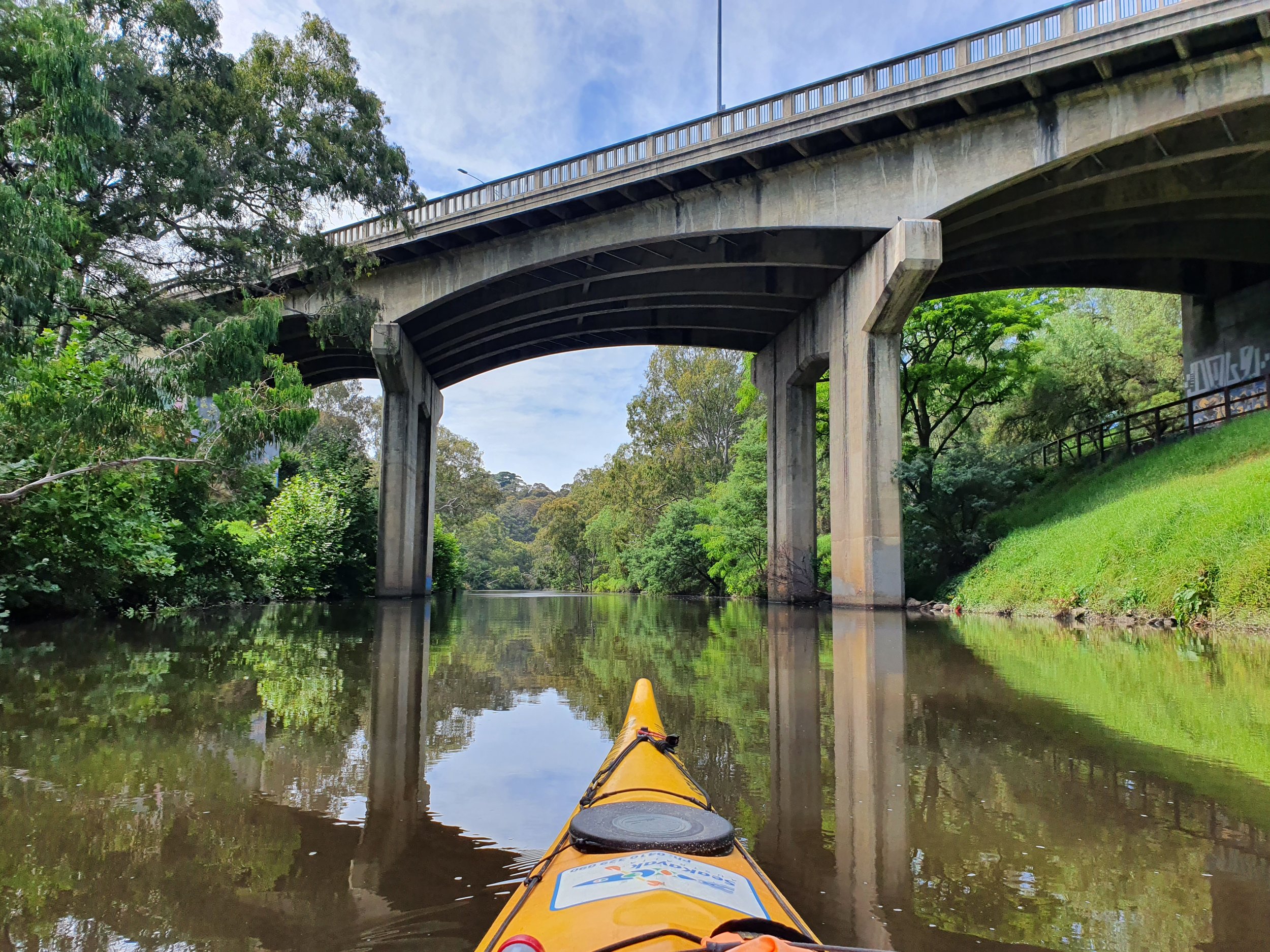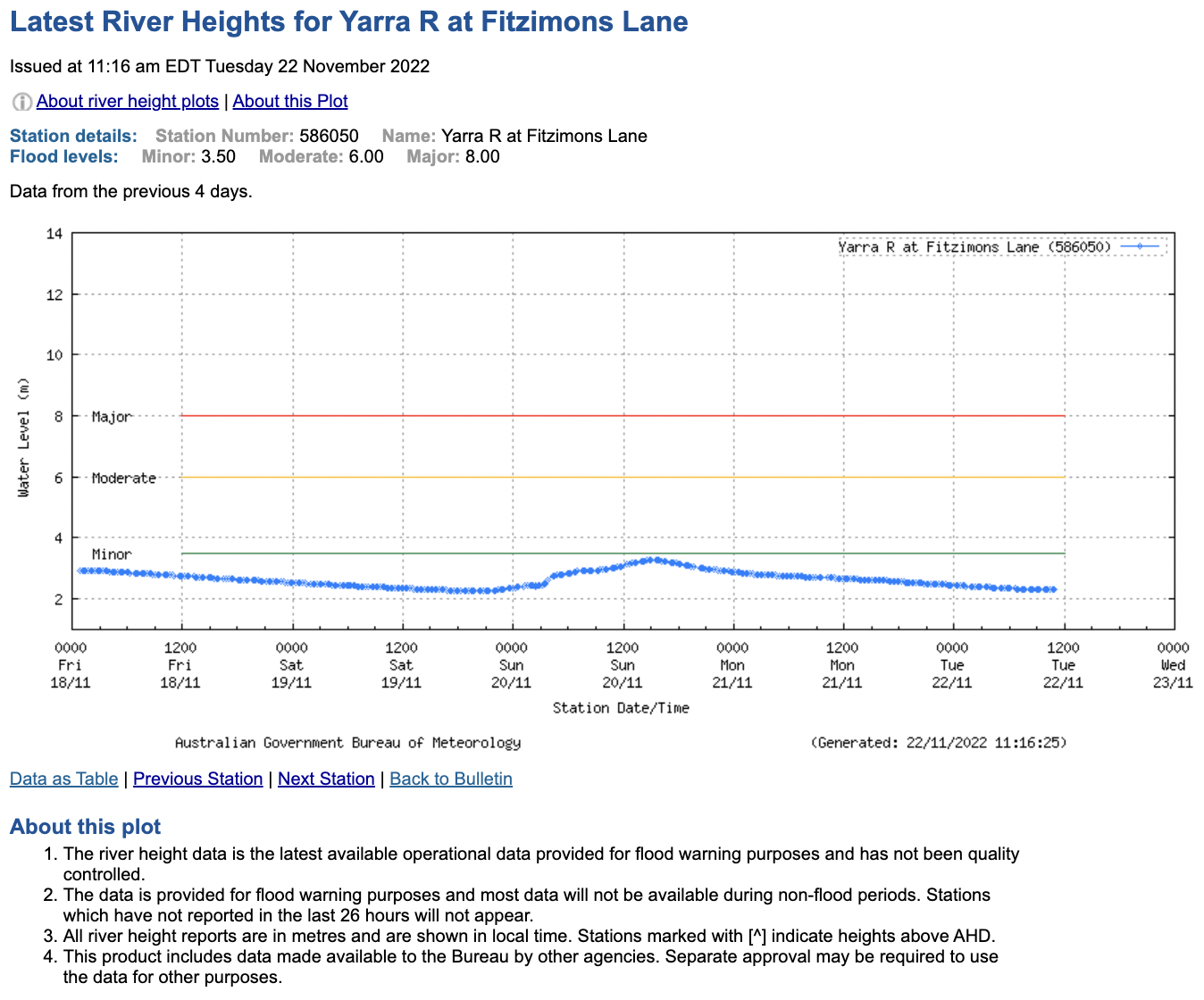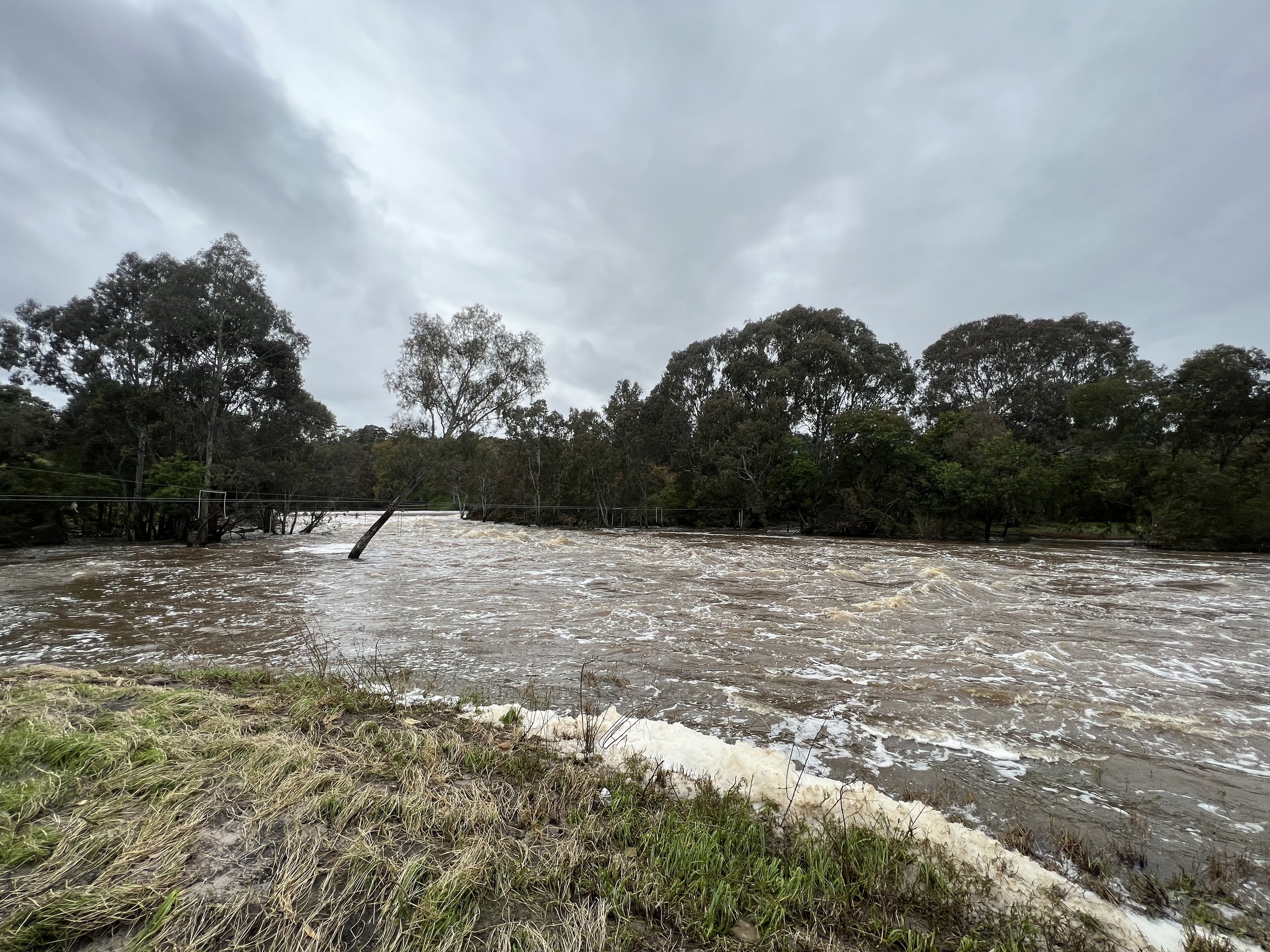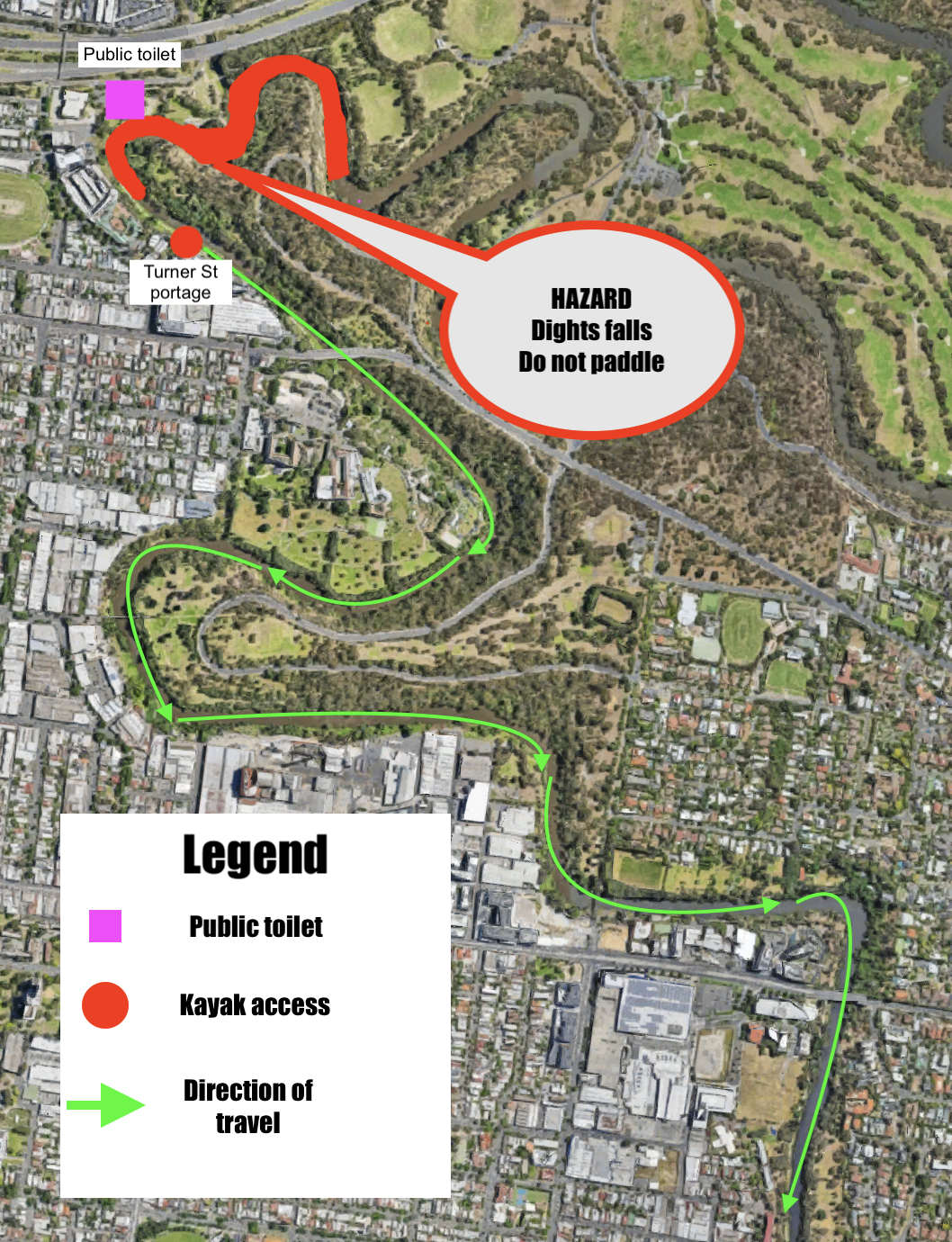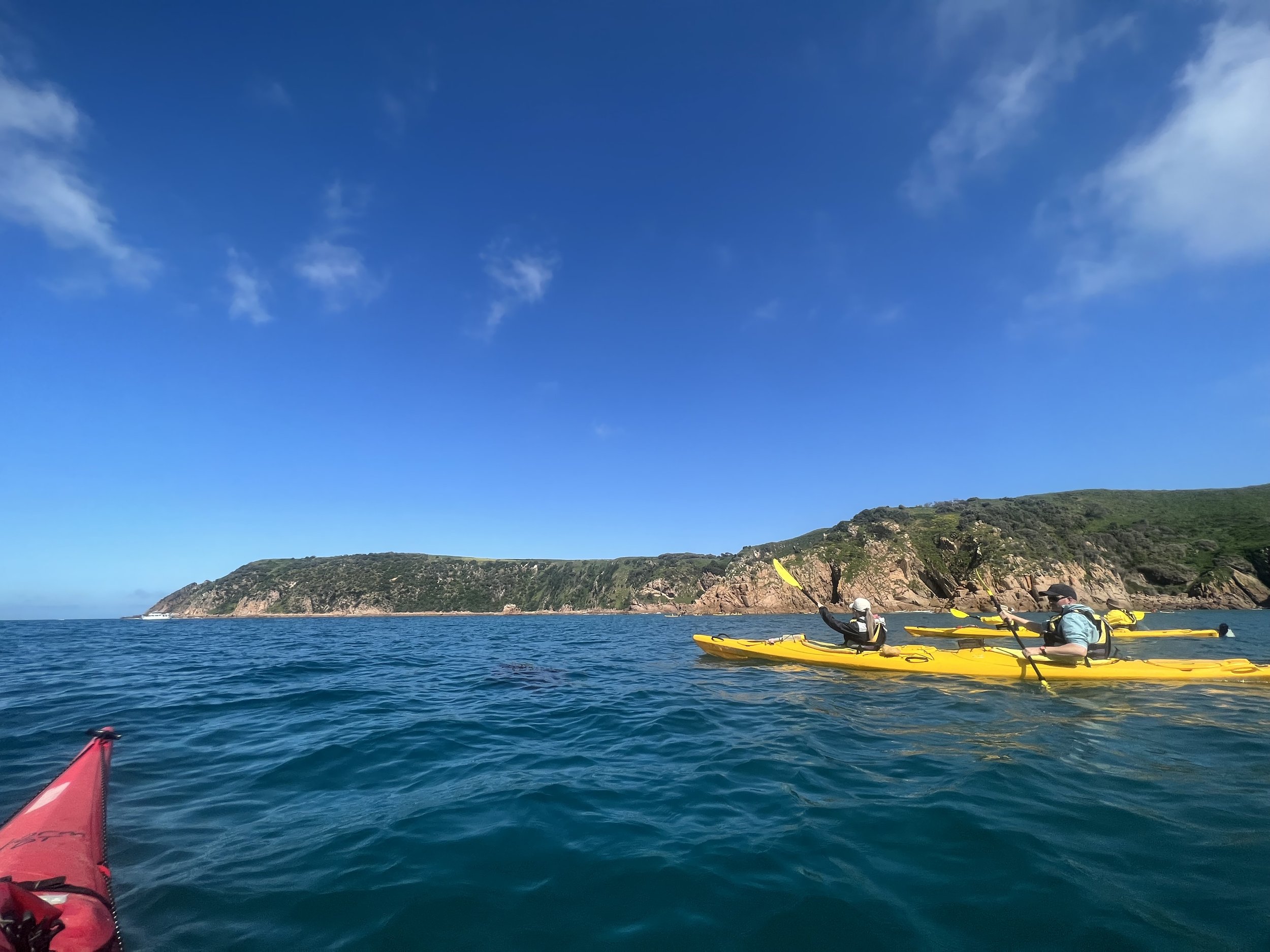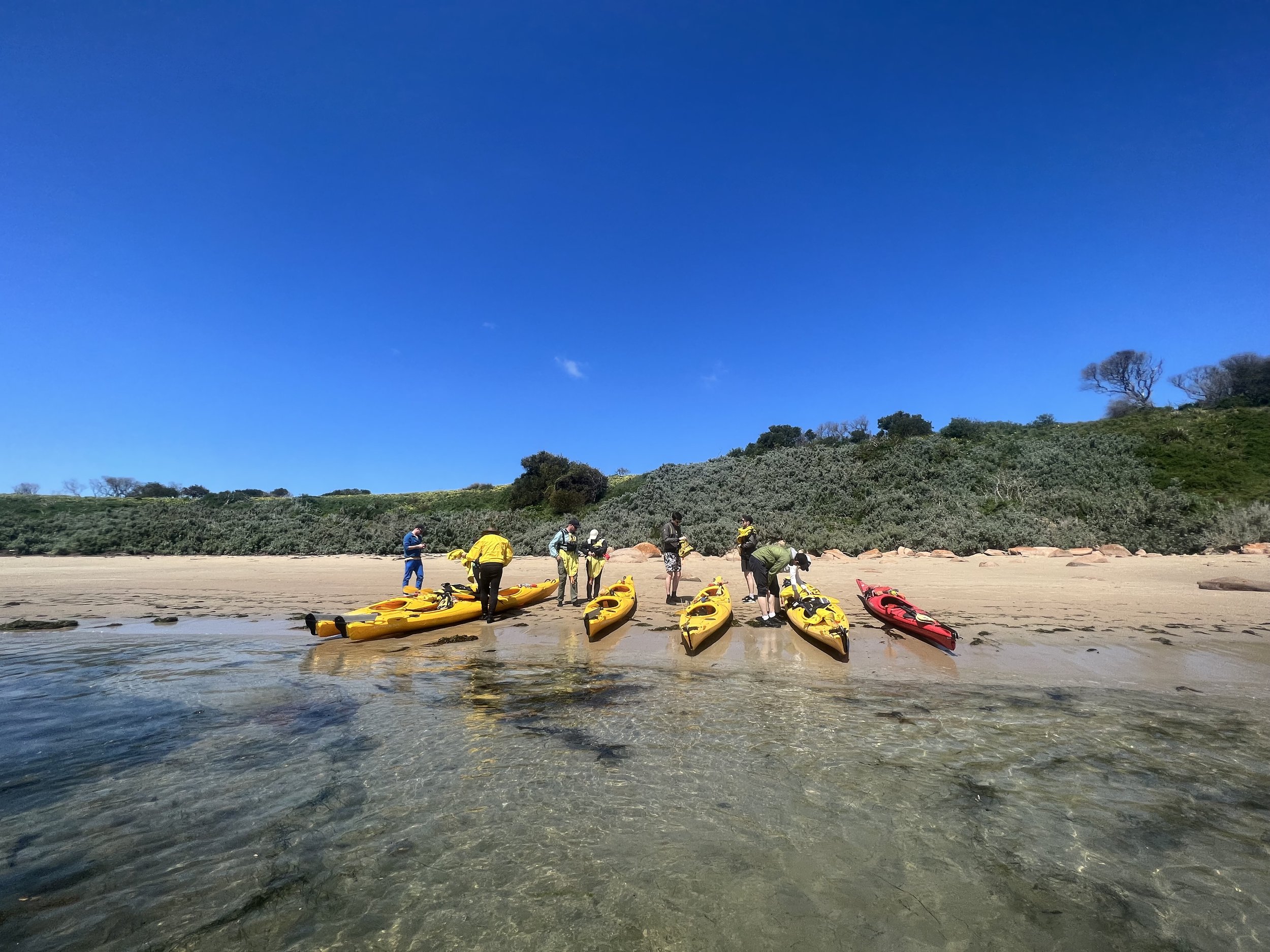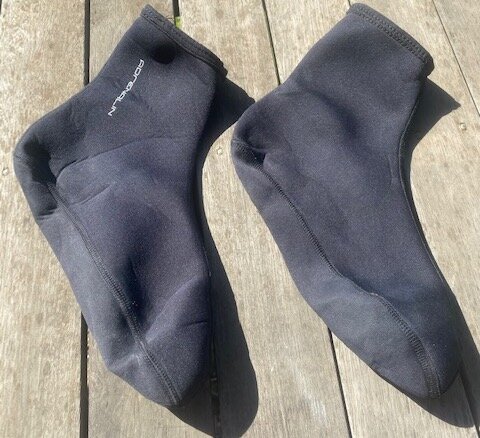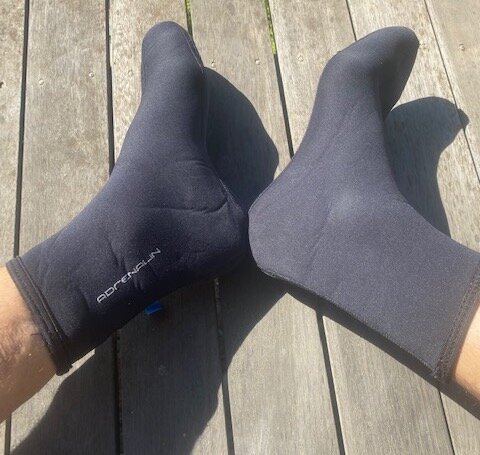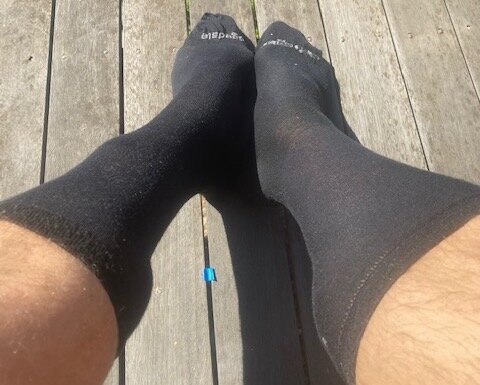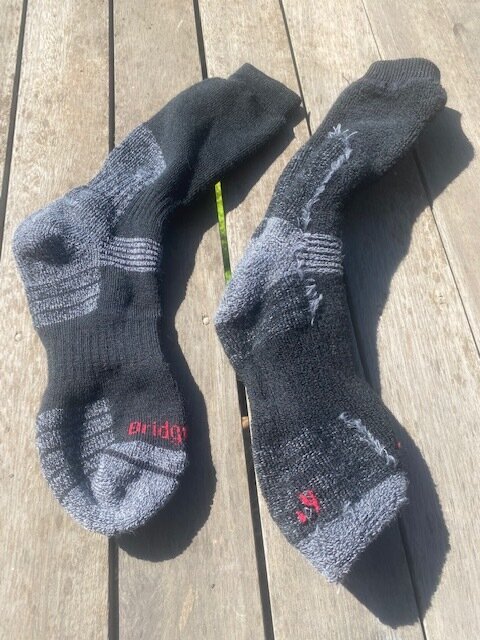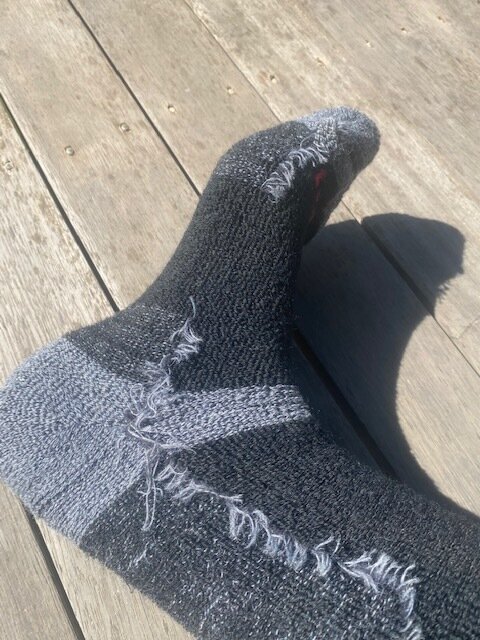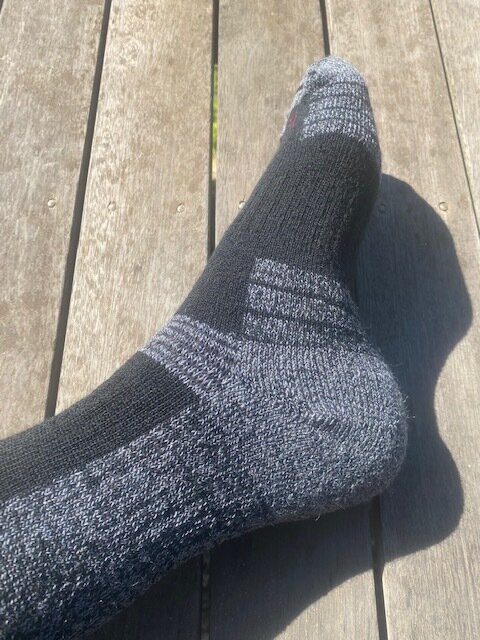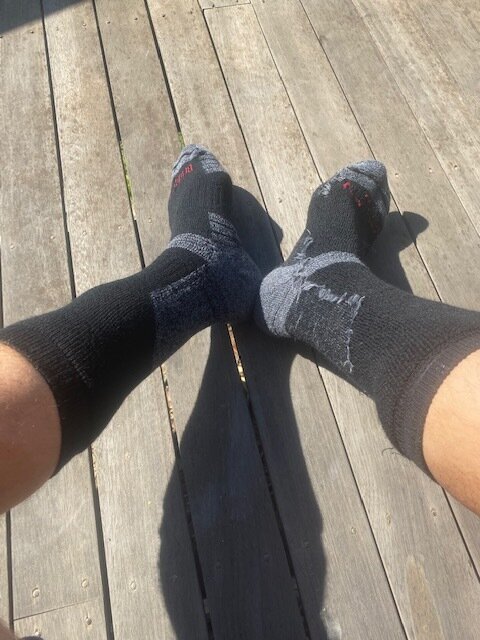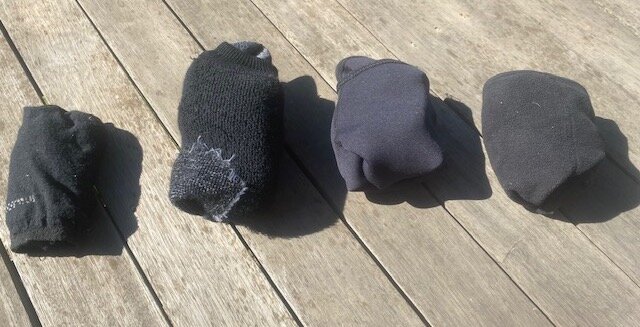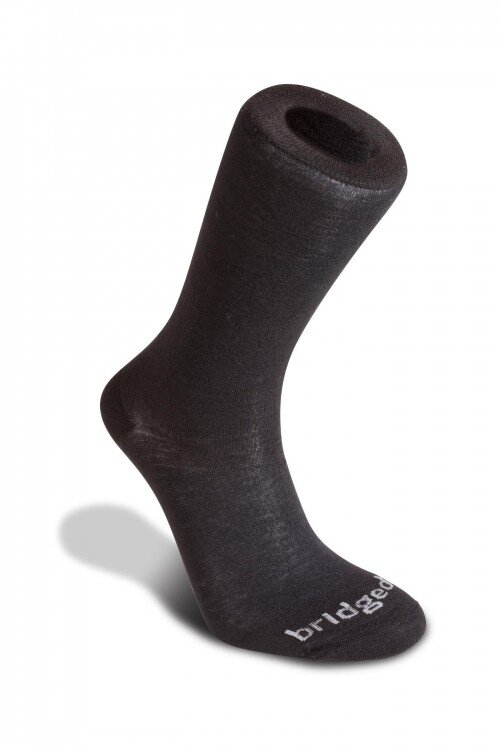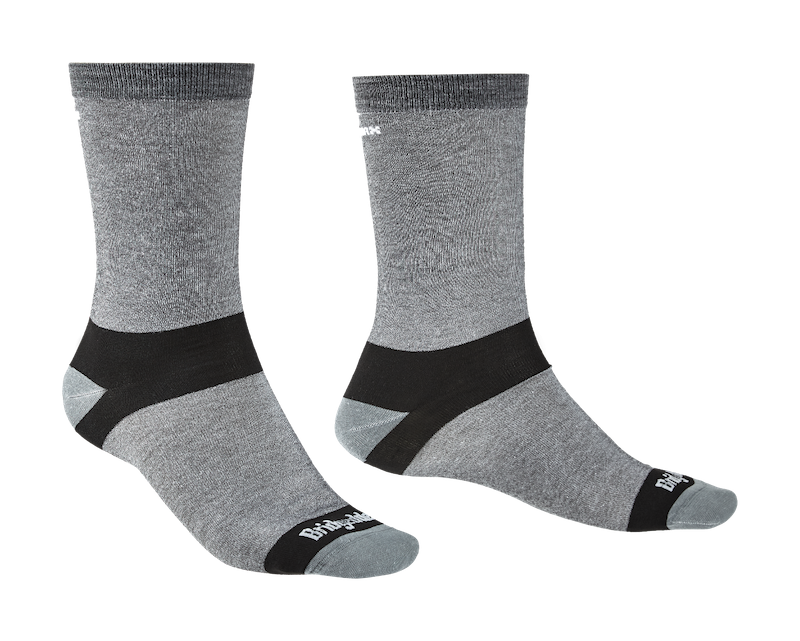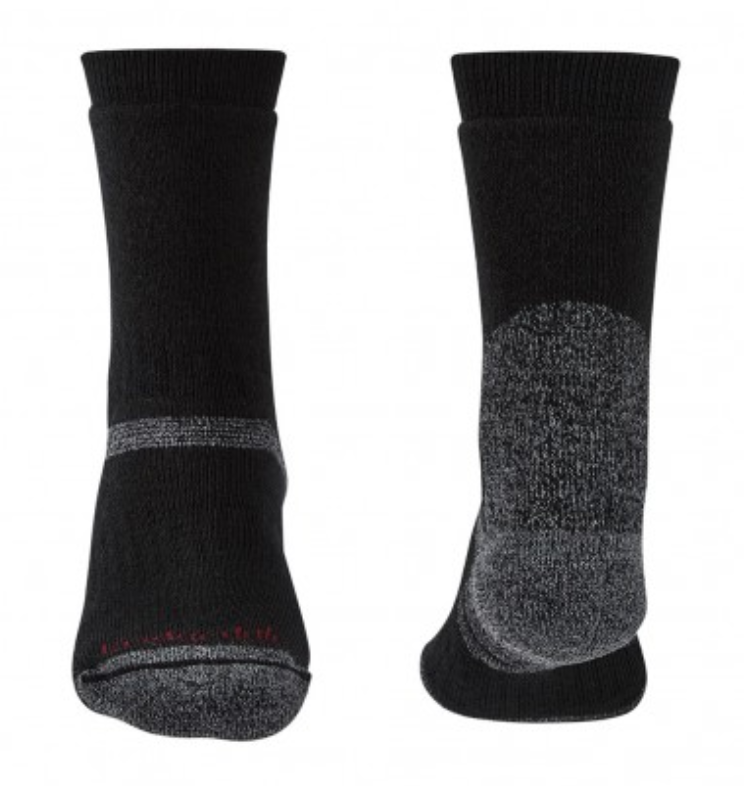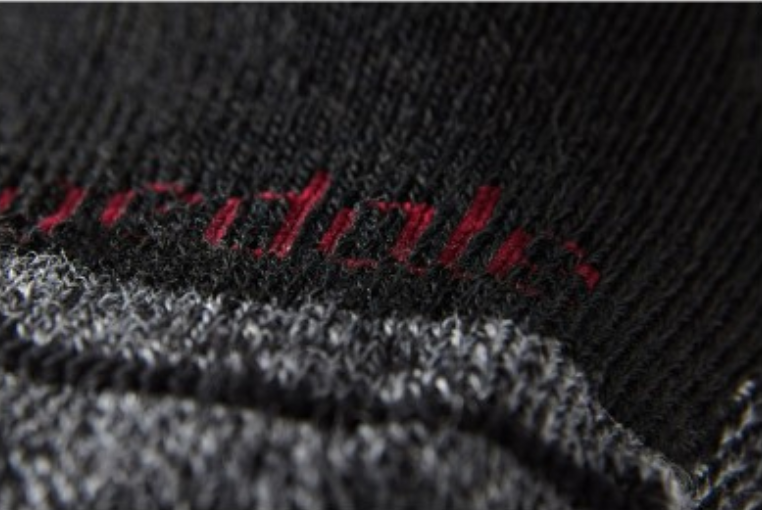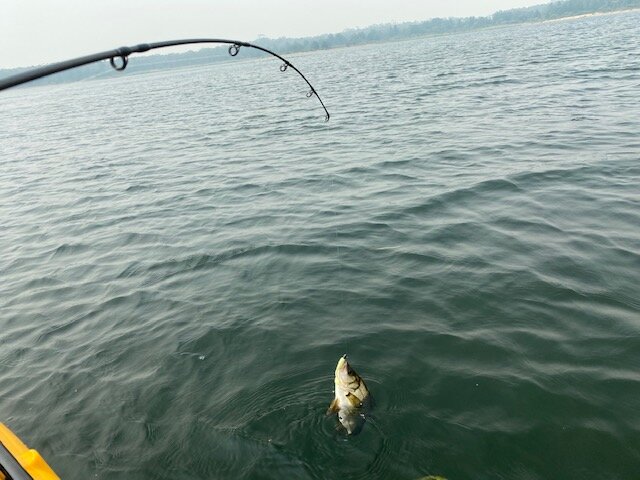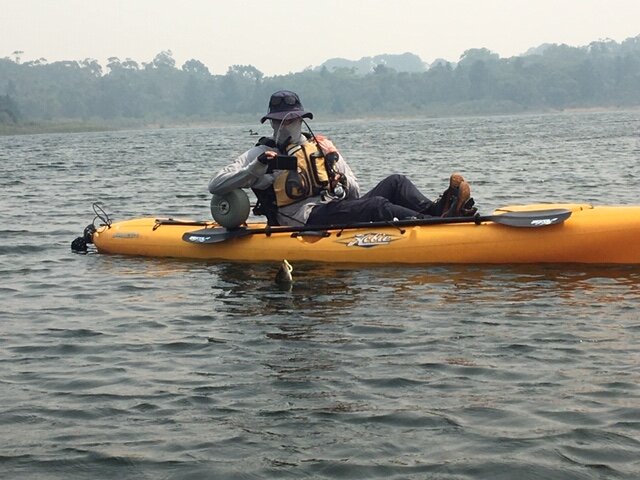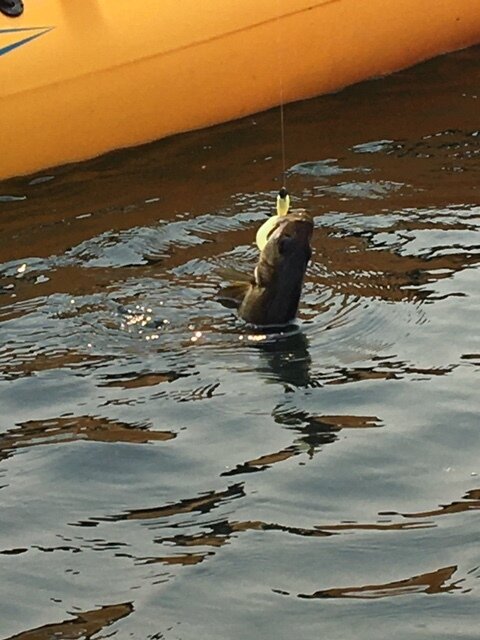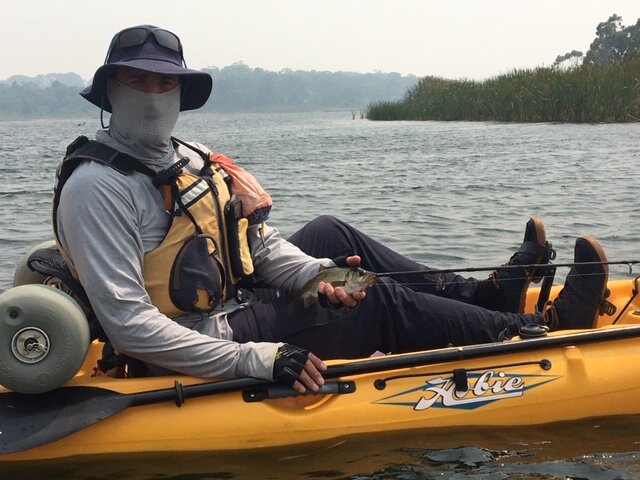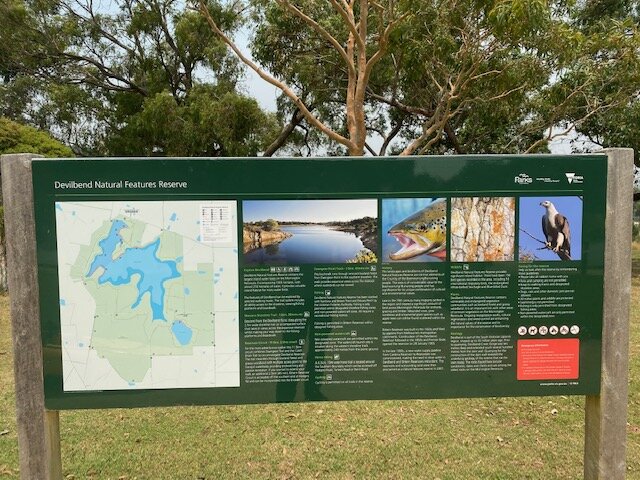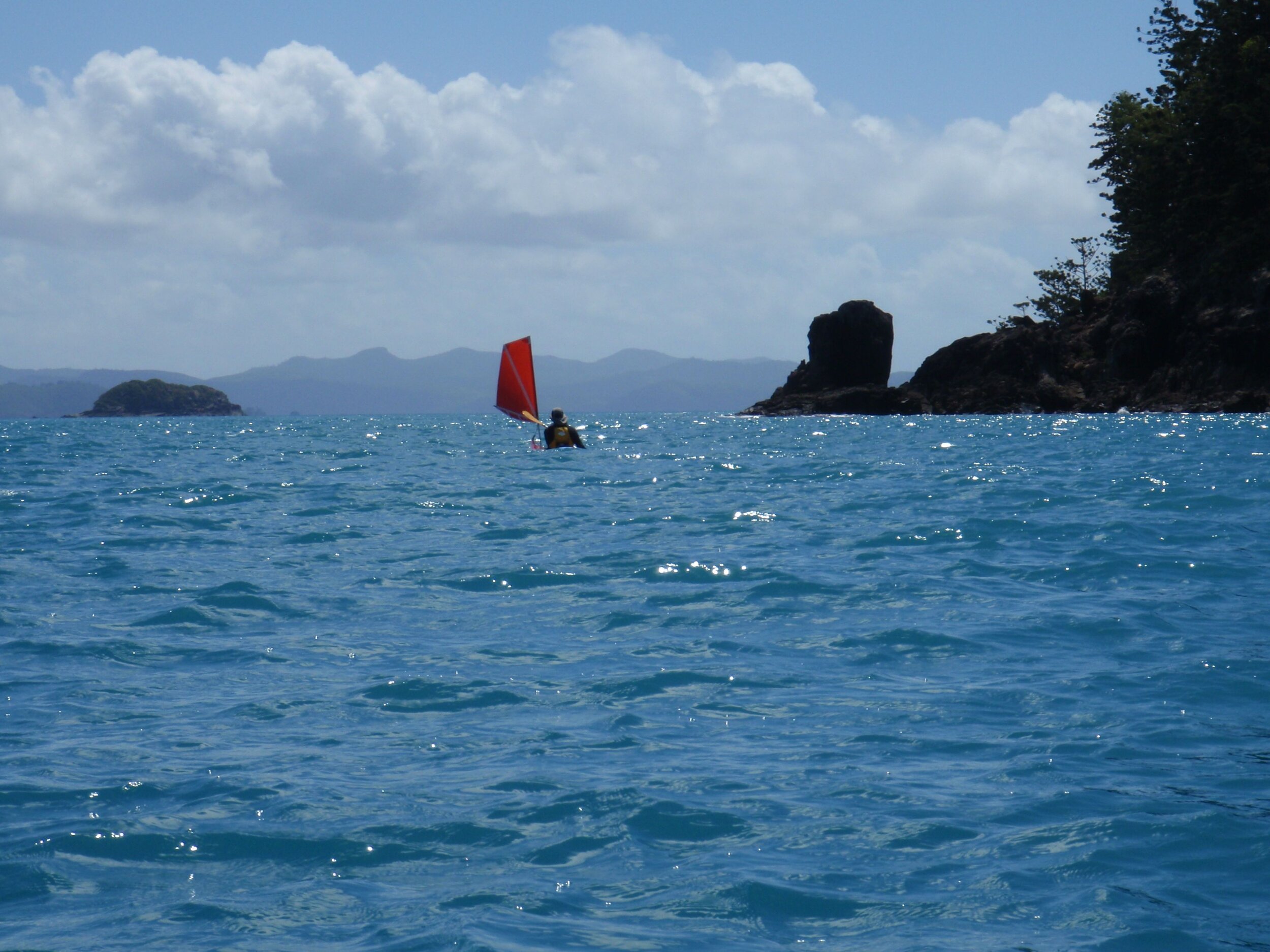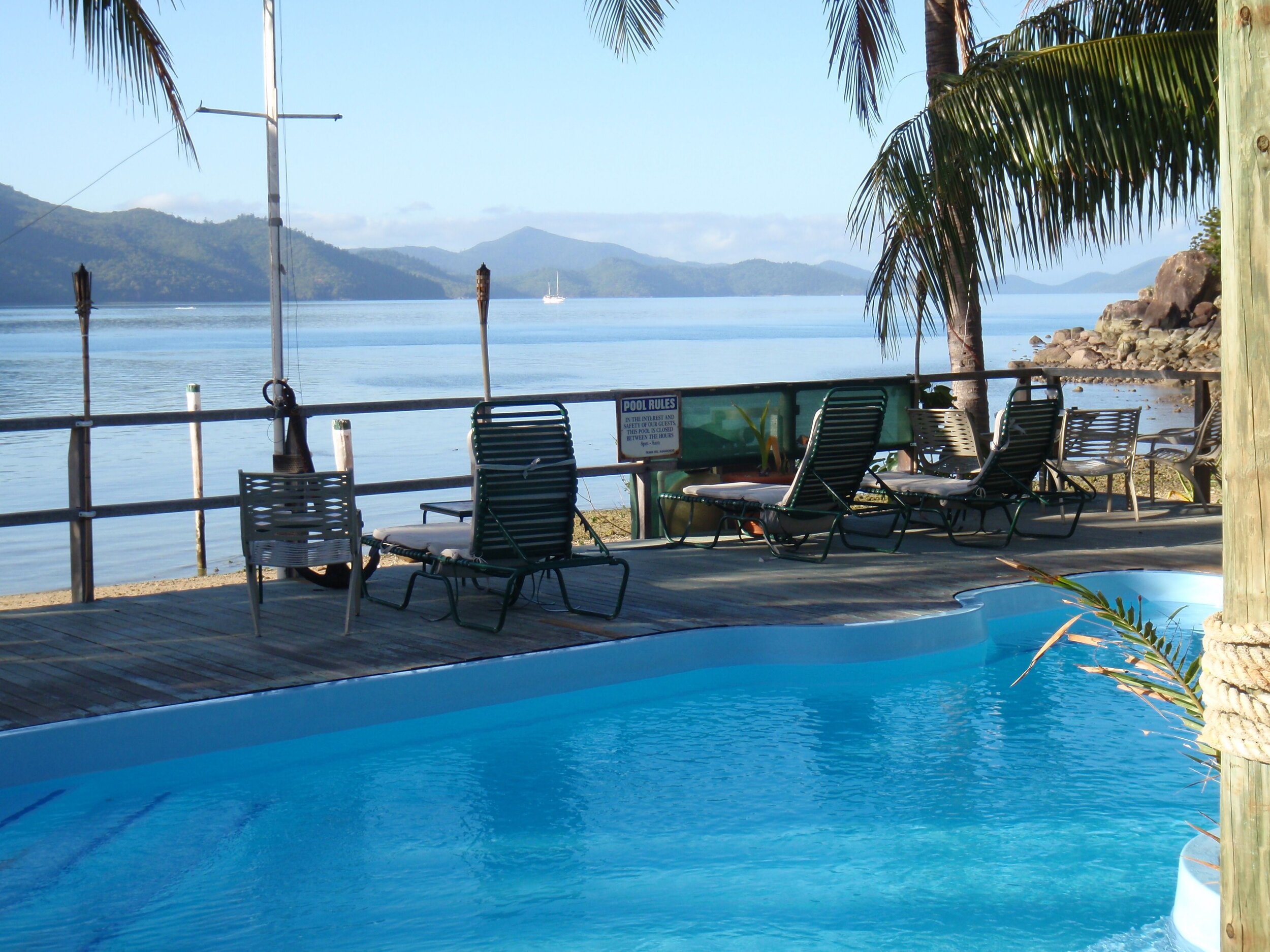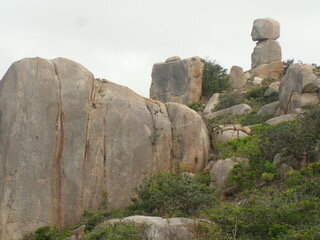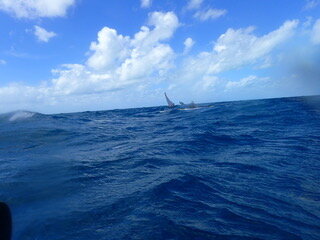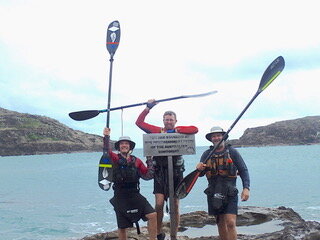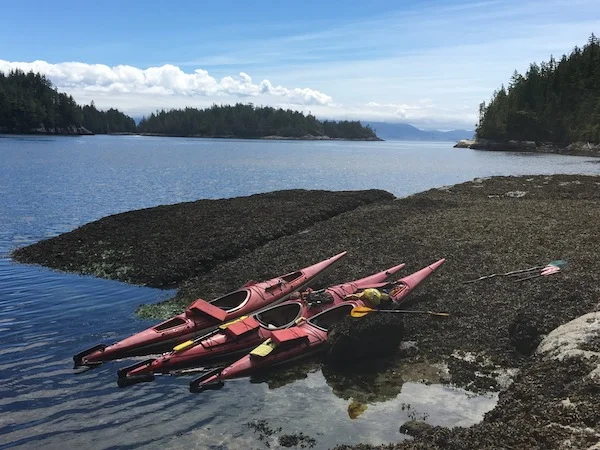Planning, Logistics and other important matters
The Whitsundays are a very accessible area for kayaking and can be done as a longer trip like this, or in a very leisurely fashion – you can even get dropped off by Scamper to avoid crossing between islands and can organise food drops.
Time of Year
We left at the end of August and finished in mid-September. This is probably the most forgiving time of year – it was warm, the trade winds are dropping off, but it is not yet stinger season (starts in October) and the bugs weren’t too bad – we had sandflies and mozzies but not march flies.
Note: Since this trip the sharks in Cid Harbour (which we didn’t visit) and Irukandji jellyfish have become an issue.
Weather
Even with the comparatively mild September conditions, you still need the means to forecast the weather. We took a sideband radio and listened to the scheduled weather forecasts each day. Telstra phones worked at most campsites (not on the far side of Whitsunday & Hook) and provided a backup if we needed a forecast at unscheduled times.
(How times have changed! Now we use Meteye - coverage still not available on the far side of Whitsunday & Hook Islands though.)
The dominant weather pattern in ‘winter’ is SE winds, but by September there are some days of NE winds and generally the winds are stronger in the afternoon. Wind direction depends on whether there is a low pressure trough passing or a high pressure ridge extending from a High over the southern states. Most days we were on the water fairly early when the winds are least – between about 0630 and 0745.
Route Planning and Tides
When planning when to leave and when to paddle the tides are very important – make sure you start with the predicted tides for Mackay / Shute Harbour / Bowen as they make a big difference to your comfort landing and departing. Ideally you want to travel around high tide so you minimise carrying your gear. Some beaches are not landable at low tide (Cockermouth, Steen’s) and some will involve a long carry (Lindeman, Carlisle). Most paddling days we travelled on average 16-20km, or about 2.5-3 hours, so leaving just before high tide meant landing just after high tide.
The other consideration concerning tides is direction of the current – the flooding (rising) tide flows south, and the tide ebbs (falling tide) towards the north. The tide range is bigger near Mackay than in the north, so the currents can potentially be stronger, though we were in that area when the tide range was at its smallest (neap tides), so currents only became a consideration through passages and around points or when the wind and tide were opposing.
Once I had an idea of when to go, I plotted the route on Garmin’s Mapsource (now Homeport) software and then downloaded the distances and bearings into a spreadsheet. Adding tide times and heights, I could check that the distances and timing were optimum. I carried hard copy laminated charts (with tide info annotated) and Neil had the route and campsite waypoints uploaded to his GPS.
Water
As the weather was warming up we used close to the full 5 litres per person per day. We carried 29 litres each – 2x 10l & 1x 6l MSR bags and 3l Camelback. Carry water as close to the centre of your kayak as possible – I had the 3 litre behind my seat, 10 litres in the day hatch, 6 litres below my knees in the cockpit (secured by bungee) and 10 litres in the front hatch against the bulkhead (just forward of my feet). The kayak (Nadgee Solo) felt heavy in the water but very stable.
We topped up our supplies at resorts – they were all reasonably welcoming to kayakers except Hayman Island who do not want outside visitors. They were not part of our water replenishment plan. In addition, yachties have desal plants on board and will often offer water, and we picked up several litres from departing backpackers at Whitehaven. In all we probably were carrying more weight in water than was necessary in the early part of the trip but felt secure in our supply.
Food
We ate well and never felt hungry, but we did lose a few kilos each (intended!). Aside from replenishing the cheese and tomatoes at Hamilton Island we carried all 18 days food (plus some spares) without a food drop.
Breakfast - porridge with sultanas, but varied on a couple of rest days with pancakes (Shaker mix – just add water), with dried stewed apricots (soaked in water & heated up).
Lunch – 4 VitaWheat biscuits with tomato, cheese and avocado when we had it, and tuna or salmon when we were out of fresh food. Tomatoes last well if they have the stalks still in them and avocados can travel for a week provided they are not squashed up too much!
Dinner – a variety of dehydrated meals, all based around various mince meats (beef, chicken, lamb) with a sauce and vegetables, cooked up at home and dehydrated overnight. Use mince – very important!!! Strips / cubes of meat do not rehydrate well (a bit like the joke about cooking a galah up with a stone – boil until the stone is done then throw the galah away). Bolognaise sauce rehydrates exceptionally well. If you have beans / chick peas allow a bit more time. We usually started ‘soak time’ at around 4pm for 6pm dinner. The meat dish was teamed with appropriate source of carbohydrate (rice, couscous, pasta, mashed potato). Allow about 150 – 200g mince per person when cooking, depending on your size and how strenuous you paddle days will be (we would have been closer to the 150g). We have been using packet sauce bases in some meals but are now tending towards entirely home-made sauces / flavours. Each meal (for 2) was stored in a ziplock bag – use good quality ones else the sharp bits of dried mince tear holes in the bag and at the bottom of your dry bag you will find ‘pot luck’ a mixed bag of your last few days meals!
Snacks – on the water we had a scroggin mix of nuts, seeds and dried fruit (small ziplock bag size – about 140 - 200g per paddling day). For onshore we had a few luxuries – cheese, tinned oysters, fruit leather (home-made). We also had extra dried fruit medley in case we wanted dessert but were seldom that hungry. The big decision was alcohol – we didn’t take any (Really! Truly!). We just didn’t think we could fit it in or would have to sacrifice food or water. We did have a drink at Hook Island Resort and helped out Annie & Jill with their bottles of scotch – a small tipple at sunset. Generally though it was a mostly dry trip, we didn’t miss it and felt very healthy!
Looking after yourself
On any expedition you need to take care that you stay in good shape and are able to complete the trip. Don’t bite off more than you can chew with paddle distances – even if you are on a tight schedule plan your stages so that you have rest days (it is a holiday after all!) and also can make up time if you have to take weather days.
Look after your back – this means around camp and when moving your kayak. The Nadgee wheels are great but if the sand is soft / beach steep you may have to unload and carry some gear. If you have a very heavy kayak such as a hired double you may need more than two people to carry it empty, let alone full. This may determine the minimum size of your group. We also took ‘noodles’ for use as rollers on gravelly beaches – they were useful at Maureen’s Cove and Saddleback Island in particular and helped to protect the gel coat.
Look after your skin – (1) Bugs – protect yourself against march flies, mosquitoes (there was a dengue fever outbreak in Qld that year) and possibly sandflies. Use long sleeves, pants and repellent. Even so I got a few bites but with a daily Telfast I avoided the usual itching.
(2) Plants – there are stinging plants in the vine forests – it is probably better to stay on the tracks or walk on the beach.
(3) Hygiene – you are unlikely to be able to have a freshwater wash often, but there are alternatives. Getting all the bug spray , sunscreen and salt off each night will help keep your skin healthy, avoid chafing and keep your off water clothes & bedding nice for longer. Wilderness Wash in salt water is one method, but you are still salty. I prefer to use those moist towelettes / facial wipes, though they don’t work on hair! The shower at the marina on Hamilton Island was welcome!
(4) Sunscreen & protective clothing – as you would at home.
Booking campsites
The national parks campsites can be booked on line except at that time, for St Bees & Cockermouth Islands – I had to phone up Mackay or Airlie Beach for those. I ended up booking all mine over the phone with the ranger at Airlie Beach. Campsites were $5 per person per night. Except on Hook Island and Whitehaven Beach we had the campsites to ourselves – at the start and end we were a day or so out from our itinerary, but in the busy areas we tried be there on the day we had booked for. This is particularly important if you are in a big group – some school and club groups were travelling with 10 or more people and tended to overwhelm campsites.
From talking to the ranger, their attitude at that time was that if you can’t be exactly where you have booked due to the weather, then that is better than putting yourself in danger. Aside from the guys working at Chance Bay and Whitehaven Beach we didn’t see any national parks staff, and those weren’t checking permits, but there were rangers about as somebody was trimming the grass and topping up the toilet paper at various sites (& doing burning off at St Bees the week after we were there).
Resources:
Corfelt, D. 2004. 100 Magic Miles of the Great Barrier Reef: the Whitsunday Islands (7th Ed.).







